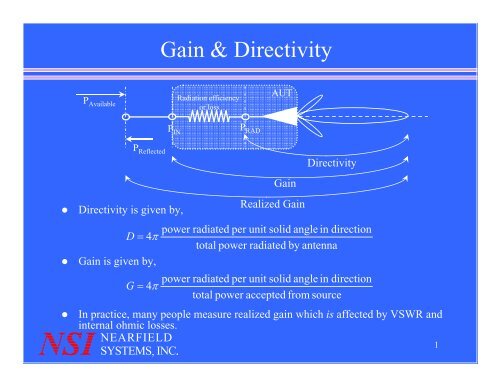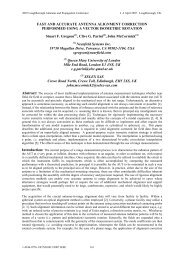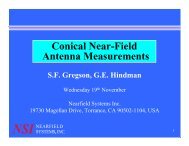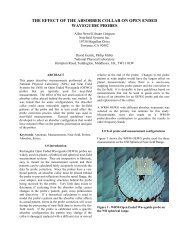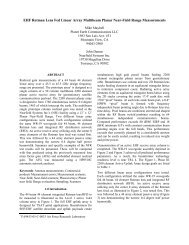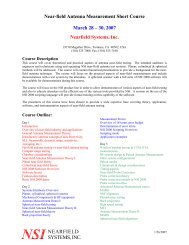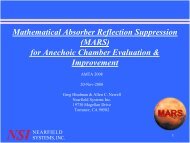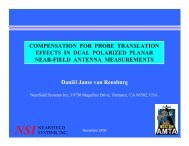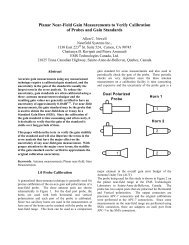gain & directivity slides
gain & directivity slides
gain & directivity slides
You also want an ePaper? Increase the reach of your titles
YUMPU automatically turns print PDFs into web optimized ePapers that Google loves.
Gain & Directivity<br />
P Available<br />
P Reflected<br />
Radiation efficiency<br />
or loss<br />
AUT<br />
P IN<br />
P RAD<br />
Directivity<br />
• Directivity is given by,<br />
Gain<br />
Realized Gain<br />
power radiated per unit solid angle in direction<br />
D = 4π<br />
total power radiated by antenna<br />
• Gain is given by,<br />
power radiated per unit solid angle in direction<br />
G = 4π<br />
total power accepted from source<br />
• In practice, many people measure realized <strong>gain</strong> which is affected by VSWR and<br />
internal ohmic losses.<br />
1
Gain, Directivity & Efficiency<br />
• Gain in a direction is given by,<br />
power radiated per unit solid angle in direction<br />
G = 4π<br />
total power accepted from source<br />
• Directivity in a direction is given by,<br />
power radiated per unit solid angle in direction<br />
D = 4π<br />
total power radiated by antenna<br />
• Taking e r to denote radiation efficiency, when expressed in decibel form,<br />
<strong>directivity</strong> and <strong>gain</strong> can be related through,<br />
G<br />
dB<br />
= D<br />
• According to the IEEE standards, <strong>gain</strong> does NOT include losses arising from:<br />
• Impedance mismatches (reflection losses),<br />
• Polarization mismatches (losses).<br />
• In general <strong>gain</strong> is measured and <strong>directivity</strong> is calculated.<br />
dB<br />
− e<br />
r dB<br />
2


